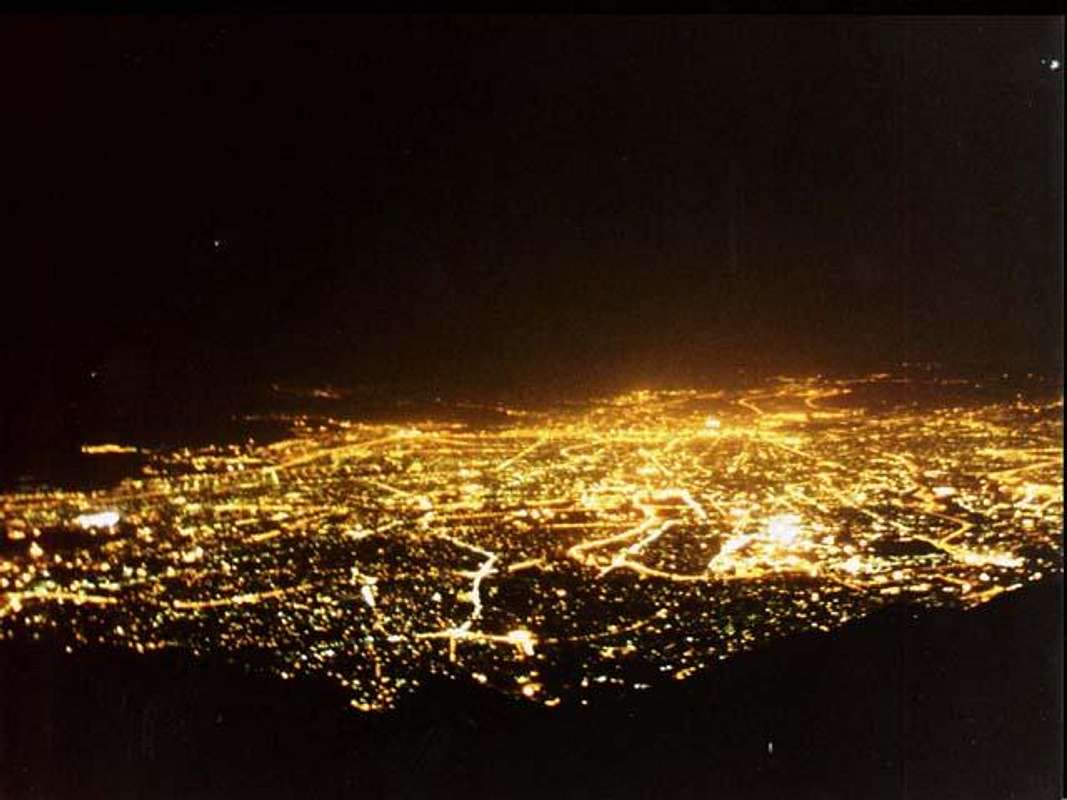|
|
Mountain/Rock |
|---|---|
|
|
35.85920°N / 51.45750°E |
|
|
10991 ft / 3350 m |
|
|
Overview
 south-east view from near Sad'abad castle | ||||||||||||||||||||||||||||||||||||||||||||||||||||||
| Introduction to Tochal massif | ||||||||||||||||||||||||||||||||||||||||||||||||||||||
|
Tochal slopes are always full of people sometimes to much crowded, there is no record of the number of trekkers and climbers but I'm sure it's one of the most climbed and trekking mountains in the world.
Click for Introduction to Central Alborz Mountains | ||||||||||||||||||||||||||||||||||||||||||||||||||||||
| Kolakchal | ||||||||||||||||||||||||||||||||||||||||||||||||||||||
 south view from Farmaniye Koolak means heavy storm, and Chal means pit in Persian so Kolakchal would mean storm pit. This peak is the most distinct and photogenic peak of the south Tochals, it looks like a perfect cone with a narrow peak from western parts of Tehran and like a big straight rocky wall dominating some part of the city from east Tehran. Ignoring Kolakchal ! when I'm climbing from Darband, first I'm enchanted by the beauty of Kolakchal so I'll decide to climb it, but when I reach to Shirpala shelter, the majesty of Tochal will capture me to climb Tochal instead of Kolakchal ! anyway if you feel you are out of shape, you can first climb Kolakchal, it would be a good pre climbing for Tochal. Summery: Kolakchal is an easy and fun trekking climb ! * There are two peaks one at the top of the Kolakchal wall(3300m) and one a little bit back-east to it (3340). In some maps the Kolakchal peak is marked 3340m and in some 3300m leaving the 3340m peak un-named. I can think Kolakchal is these two peaks! | ||||||||||||||||||||||||||||||||||||||||||||||||||||||
| About Iran and Tehran | ||||||||||||||||||||||||||||||||||||||||||||||||||||||
 Tehran from Tochal summit | ||||||||||||||||||||||||||||||||||||||||||||||||||||||
| [I added this section to give a small glance to people who want to travel to Iran] Iran is high plane hosting two vast ranges of mountains Alborz and Zagros including hundreds of 4000+m summits. Even taught there are two big deserts in the middle of Iran still it's been said 3/4 of the plane is covered by mountains, there are still lots of 4000+m and 3000+m outside the Alborz and Zagros ranges scattered all over the Iran plane like Kerman mountains and Taftan volcano, the weather varies from dry hot to mountain conditions and to the thick green lush and humidity of the north Caspian sea coast. The behavior of Iranians is friendly and they are helpful to foreign people from Europe and America (this friendly behaves may no be applied to Arabs), you can quickly make a friend who would be glad to guide you and stay beside you and invite you to his/her home. The pipe-supplied and mineral water and food served in restaurants and supplied from stores is safe (avoid food from road sellers in downtown). Security is granted by the police, there are two kind of polices in Iran the green ones and the blue ones, blue is only for traffic control, greens are for security and criminal matters. | ||||||||||||||||||||||||||||||||||||||||||||||||||||||
Getting There + Normal Routes...
| Red lines are routes, left to right : 1-Darband sarband route 2-Routes and sub routes to Spillet area 3-Golabdarreh route 4-Jamshidiyeh park route 5-Darabad routes | |
| |
Jamshidiyeh park (normal south route): | |
Golabdareh valley (a south route): | |
East/south-east: | |
| North routes: | |
| |
Red Tape and Regional Hints
| The whole Alborz mountains area and it's wild nature is a protected place, hunting, fishing and abusing the nature is prohibited |
| No fees of permission is required for climbing or camping |
| Before performing a climb on Tochal peaks from south first make sure that the air is clean, an air inversion in Tehran, would only bring you hell on the mountain, ... climbing with headache ! all spring days, most winter days, some summer days and few autumn days are clean |
| All parts of north Tehran mountains become too much crowded on holidays and Fridays, people come there to hike. I don't recommend climbing in these days. if you are serious to do it start before 5am. |
When To Climb
| Best | Spring and autumn |
| Photography | Spring and winter |
| Summer | I really hate climbing under straight burning sunlight with you may not! |
| Winter | Heavy snow, storms and windy... but still I believe climbing on a clear sunny winter day is the best option. |
Mountain Conditions
In General:
| Summer | Dry, hot at lower parts. |
| Winter | Heavy snow and serious snow storms at the top, I hear about deaths of people who underestimate the conditions of Tochal massif every year ! the conditions are not always mellow. Avalanches occur so often on Tochals after snowfalls and that's a danger for those who climb out of route and forget that avalanches occur on the Tochals (the normal routes are safe). |
Snow Forecast:
There isn't a direct forecast for Kolakchal peak on this site but the weather is mostly to be like the Tochal, the peaks on Tochal massif are close to each other and likely have the same conditions at the same altitudes. for Kolakchal summit you can think of something between 2897m and 3962m:
1832m
3962m
2897m
Nader's snow melt-off reference:
Note that the very right doted peaks are Kolakchal
April 15, 1981.
April 26, 1981.
May 11, 1981.
May 23, 1981.
June 3, 1981.
July 11, 1981.
August 7, 1981.


